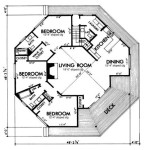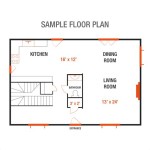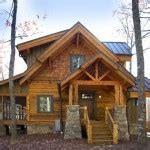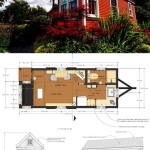A floor plan for a house is a detailed drawing that shows the layout of the rooms, their dimensions, and the location of doors, windows, and other features. It is an essential tool for planning the construction of a house, as it allows the builder to visualize the space and make sure that everything fits together properly.
Floor plans can also be used to remodel an existing house or to make changes to the layout. They can be helpful for planning furniture placement, choosing paint colors, and making other design decisions. In addition, floor plans can be used to create virtual tours of a house, which can be helpful for marketing purposes or for giving potential buyers a better idea of the layout.
The main body of this article will provide more information on the different types of floor plans, how to read and understand them, and how to use them to plan the construction or remodeling of a house.
When creating a floor plan for your house, there are several important points to keep in mind:
- Room layout
- Traffic flow
- Natural light
- Furniture placement
- Storage space
- Electrical outlets
- Plumbing fixtures
- Building codes
By considering these factors, you can create a floor plan that meets your needs and creates a comfortable and functional living space.
Room layout
The room layout is one of the most important aspects of a floor plan. It determines how the space will be used and how people will move around the house. When planning the room layout, there are several factors to consider:
- Traffic flow: The room layout should allow for easy movement throughout the house. There should be no bottlenecks or areas where people are forced to squeeze past each other.
For example, the kitchen should be located near the dining room and living room, so that food can be easily transported between these areas. The bedrooms should be located away from the main living areas, so that they are quiet and private.
- Natural light: The room layout should take advantage of natural light. Windows should be placed in areas where they will provide the most light, such as in the living room, kitchen, and bedrooms.
For example, a south-facing living room will receive more natural light than a north-facing living room. A kitchen with a window over the sink will allow the cook to enjoy the outdoors while preparing meals.
- Furniture placement: The room layout should allow for furniture to be placed in a comfortable and functional way. There should be enough space for people to move around easily, and the furniture should be arranged so that it creates a cohesive and inviting space.
For example, the living room should have enough space for a sofa, chairs, and a coffee table. The dining room should have enough space for a table and chairs to accommodate the number of people who will be using the room.
- Storage space: The room layout should include adequate storage space. This can be in the form of closets, cabinets, shelves, or other storage solutions.
For example, the kitchen should have enough cabinets to store food, dishes, and cookware. The bedrooms should have enough closet space to store clothes and other belongings.
By considering these factors, you can create a room layout that meets your needs and creates a comfortable and functional living space.
Traffic flow
Traffic flow is an important consideration when creating a floor plan for your house. It refers to the way that people move around the house, and it can have a big impact on the overall livability of your home.
Good traffic flow means that people can move around the house easily and without getting in each other’s way. There should be no bottlenecks or areas where people are forced to squeeze past each other. Traffic flow should also be efficient, so that people can get from one room to another without having to backtrack or take unnecessary detours.
There are several ways to improve traffic flow in your house. One important factor is the placement of doors and windows. Doors should be placed so that they don’t block traffic flow, and windows should be placed so that they don’t create glare or obstruct views.
Another important factor is the size and shape of rooms. Rooms that are too small or too narrow can make it difficult to move around, while rooms that are too large can feel empty and impersonal. The shape of a room can also affect traffic flow. For example, a long, narrow room can be difficult to navigate, while a square or rectangular room is more efficient.
By considering traffic flow when creating a floor plan for your house, you can create a home that is both comfortable and functional.
Natural light
Natural light is an important consideration when creating a floor plan for your house. It can have a big impact on the overall mood and atmosphere of your home, and it can also affect your health and well-being.
There are several benefits to natural light. It can help to improve your mood, boost your energy levels, and increase your productivity. Natural light can also help to reduce stress and anxiety, and it can even improve your sleep quality.
In addition to these health benefits, natural light can also make your home more beautiful and inviting. A well-lit home is more welcoming and comfortable, and it can make your home feel more spacious.
There are several ways to incorporate natural light into your floor plan. One important factor is the placement of windows. Windows should be placed so that they allow natural light to enter the room from multiple directions. This will help to create a more evenly lit space.
Another important factor is the size and shape of windows. Larger windows will allow more natural light to enter the room, and windows that are placed high on the wall will allow light to penetrate deeper into the room.
By considering natural light when creating a floor plan for your house, you can create a home that is both healthy and beautiful.
Furniture placement
Furniture placement is an important consideration when creating a floor plan for your house. It can have a big impact on the overall look and feel of your home, and it can also affect the functionality of your space.
When placing furniture, there are several factors to keep in mind:
- Function: The first step is to consider the function of the room. What activities will take place in this room? How many people will typically be using the room at once? Once you know the function of the room, you can start to think about the best way to arrange the furniture to accommodate those activities.
- Traffic flow: It is important to make sure that the furniture placement does not impede traffic flow. People should be able to move around the room easily without having to squeeze past furniture or navigate awkward obstacles.
- Focal point: Every room should have a focal point, which is the main object that draws the eye. This could be a fireplace, a large window, or a piece of art. The furniture should be arranged around the focal point to create a sense of balance and harmony.
- Scale: The size of the furniture should be in proportion to the size of the room. Oversized furniture can make a small room feel even smaller, while undersized furniture can make a large room feel empty and impersonal.
By considering these factors, you can create a furniture placement plan that meets your needs and creates a comfortable and functional living space.
Storage space
Storage space is an important consideration when creating a floor plan for your house. It is important to have enough storage space to accommodate all of your belongings, but you also don’t want to have too much storage space that goes unused.
There are several different types of storage space that you can incorporate into your floor plan. Closets are a common type of storage space, and they can be used to store a variety of items, such as clothes, shoes, and linens. Cabinets are another type of storage space, and they can be used to store dishes, cookware, and other kitchen items. Shelves are a versatile type of storage space, and they can be used to store books, movies, games, and other items.
When planning for storage space, it is important to consider the following factors:
- The amount of storage space you need: The amount of storage space you need will depend on the size of your household and your lifestyle. If you have a large family or if you have a lot of belongings, you will need more storage space.
- The type of storage space you need: There are different types of storage space available, such as closets, cabinets, and shelves. The type of storage space you need will depend on the items you need to store.
- The location of the storage space: The location of the storage space is important. You want to make sure that the storage space is easily accessible and that it is not in the way.
By considering these factors, you can create a storage plan that meets your needs and creates a comfortable and functional living space.
Electrical outlets
Electrical outlets are an important consideration when creating a floor plan for your house. They need to be placed in convenient locations so that you can easily plug in appliances and electronics. However, you also don’t want to have too many outlets that are not being used.
Here are a few things to keep in mind when planning for electrical outlets:
- The number of outlets you need: The number of outlets you need will depend on the size of your house and the number of appliances and electronics you have. A good rule of thumb is to have at least one outlet for every 12 feet of wall space.
- The location of the outlets: The location of the outlets is important. You want to make sure that the outlets are placed in convenient locations so that you can easily plug in your appliances and electronics. You also want to make sure that the outlets are not placed in areas where they will be blocked by furniture or other objects.
- The type of outlets you need: There are different types of electrical outlets available, such as standard outlets, GFCI outlets, and USB outlets. The type of outlet you need will depend on the appliance or electronic you are plugging in.
- The safety of the outlets: Electrical outlets can be a safety hazard if they are not installed properly. Make sure that all of the electrical outlets in your house are installed by a qualified electrician.
By considering these factors, you can create an electrical outlet plan that meets your needs and creates a safe and functional living space.
Plumbing fixtures
Plumbing fixtures are an important consideration when creating a floor plan for your house. They need to be placed in convenient locations so that you can easily access water and drainage. However, you also don’t want to have too many plumbing fixtures that are not being used.
Here are a few things to keep in mind when planning for plumbing fixtures:
- The number of plumbing fixtures you need: The number of plumbing fixtures you need will depend on the size of your house and the number of people who live there. A good rule of thumb is to have at least one bathroom for every two bedrooms.
- The location of the plumbing fixtures: The location of the plumbing fixtures is important. You want to make sure that the plumbing fixtures are placed in convenient locations so that you can easily access water and drainage. You also want to make sure that the plumbing fixtures are not placed in areas where they will be blocked by furniture or other objects.
- The type of plumbing fixtures you need: There are different types of plumbing fixtures available, such as sinks, toilets, and showers. The type of plumbing fixture you need will depend on the specific application.
- The safety of the plumbing fixtures: Plumbing fixtures can be a safety hazard if they are not installed properly. Make sure that all of the plumbing fixtures in your house are installed by a qualified plumber.
By considering these factors, you can create a plumbing fixture plan that meets your needs and creates a safe and functional living space.
In addition to the above factors, there are a few other things to keep in mind when planning for plumbing fixtures:
- The water pressure in your area: The water pressure in your area will affect the type of plumbing fixtures you can use. If the water pressure is low, you may need to install low-flow plumbing fixtures.
- The drainage system in your house: The drainage system in your house will affect the location of the plumbing fixtures. You need to make sure that the plumbing fixtures are connected to the drainage system properly.
- The cost of the plumbing fixtures: The cost of the plumbing fixtures will vary depending on the type of fixtures you choose. You need to factor the cost of the plumbing fixtures into your budget.
By considering all of these factors, you can create a plumbing fixture plan that meets your needs and creates a safe, functional, and beautiful living space.
Building codes
Building codes are regulations that govern the construction of buildings. They are in place to ensure that buildings are safe and habitable. Building codes cover a wide range of topics, including structural requirements, fire safety, and plumbing and electrical systems.
When creating a floor plan for your house, it is important to comply with all applicable building codes. This will ensure that your house is safe and up to code. Building codes vary from state to state and municipality to municipality. It is important to check with your local building department to find out which building codes apply to your area.
Building codes are typically enforced by local building inspectors. Building inspectors will review your floor plan to make sure that it complies with all applicable building codes. If your floor plan does not comply with building codes, you will be required to make changes before you can obtain a building permit.
There are several reasons why it is important to comply with building codes. First, building codes are in place to protect the safety of the occupants of the building. Buildings that are not built to code may be unsafe and may pose a risk to the health and safety of the occupants.
Second, building codes help to ensure that buildings are energy-efficient and environmentally friendly. Buildings that are built to code are more likely to be energy-efficient and to have a lower environmental impact.
Finally, building codes help to protect the value of your property. Buildings that are built to code are more likely to be durable and to have a longer lifespan. This can help to protect the value of your investment.
By complying with building codes, you can help to ensure that your house is safe, energy-efficient, and valuable.










Related Posts








